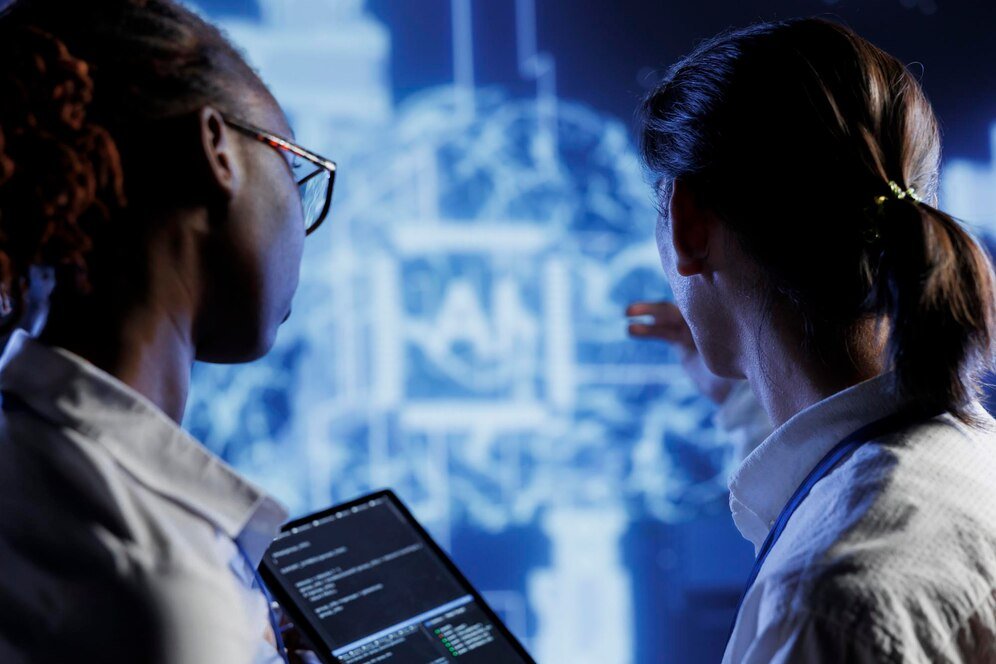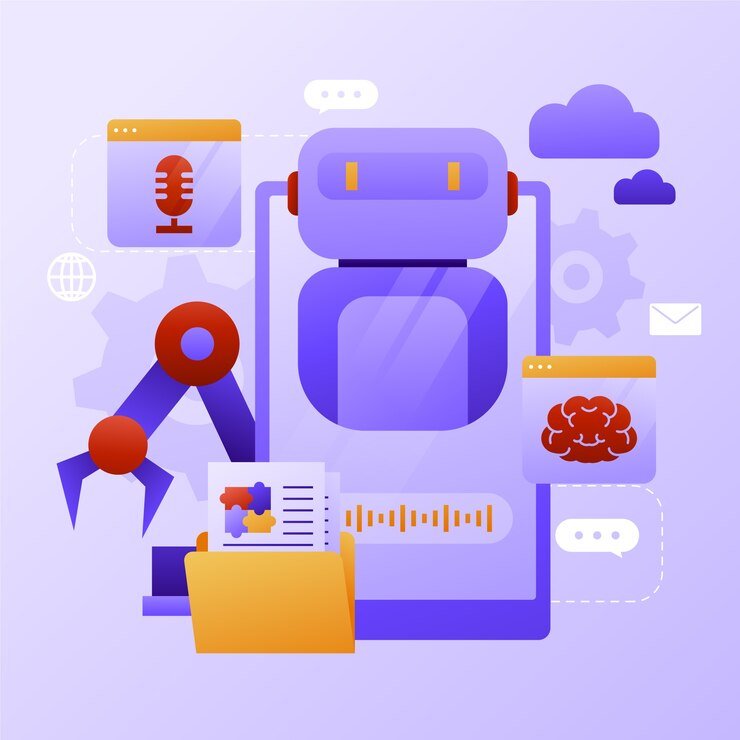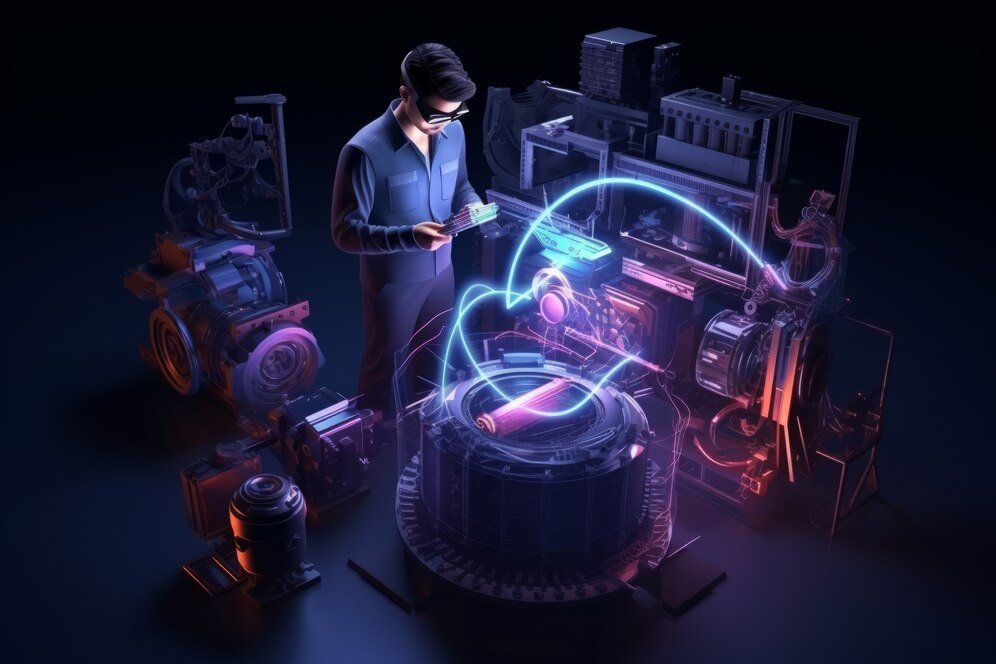Understanding AI in Agile Methodologies
Artificial Intelligence (AI) is reshaping various sectors, including project management, through its capacity to analyze vast amounts of data and provide actionable insights. In Agile methodologies, AI serves to enhance several core aspects, including decision-making, process automation, and team collaboration. By leveraging AI, Agile teams can analyze backlogs, prioritize features, and predict potential challenges, leading to improved responsiveness and efficiency.
Historically, Agile practices emerged in the early 2000s as a response to the limitations of traditional project management frameworks, notably waterfall models. Agile frameworks emphasize iterative development, allowing teams to adapt to changing requirements through short cycles known as sprints. The original Agile Manifesto highlights principles that prioritize individuals and interactions over processes and tools, thus paving the way for a culture centered around flexibility, quick feedback, and iterative improvement.
As AI technology evolved and became more accessible, its integration into Agile frameworks presented opportunities to enhance team collaboration and streamline operations. AI-driven tools can automate repetitive tasks, which in turn frees valuable time for team members to focus on strategic planning, creative problem-solving, and stakeholder engagement. Moreover, machine learning algorithms can assist Agile teams in making data-informed decisions, identifying patterns, and predicting future iterations’ outcomes based on historical performance metrics.
This synergy between AI and agile teams creates an environment where rapid testing, learning, and adaptation are not only encouraged but also significantly enhanced. Automation tools streamline workload, while AI solutions amplify the power of Agile frameworks by providing intelligent recommendations tailored to each team’s specific needs. The potential for personalized collaboration is further realized as AI systems can help track team member preferences and performance, ultimately fostering a more cohesive and efficient working atmosphere.
The Importance of AI in Modern Team Dynamics
In the rapidly evolving landscape of project management, the integration of artificial intelligence (AI) within Agile teams has emerged as a crucial factor for maintaining a competitive advantage. As organizations increasingly face pressure to enhance productivity and address complex challenges, AI-powered tools offer innovative solutions that transform traditional team dynamics.
Statistical data underscores the significance of AI in improving team performance. A recent study indicated that organizations employing AI-based project management tools experienced a productivity increase of up to 35%. These tools streamline communications, automate routine tasks, and provide insights derived from data analytics, allowing team members to focus on strategic objectives rather than mundane operations. Furthermore, AI-driven automation fosters efficient workflows, reducing bottlenecks that typically hinder progress in project management.
Case studies from various industries reflect the tangible benefits of integrating AI within Agile teams. One notable example involves a software development company that implemented AI frameworks to assist in project tracking and resource allocation. The result was a 25% reduction in project completion time and a marked improvement in team morale. Employees reported feeling less overwhelmed by repetitive tasks, which allowed for enhanced collaboration and creative problem-solving. Such examples demonstrate that AI not only boosts efficiency but also promotes a positive organizational culture.
Agile teams today face unique challenges in adapting to fluctuating market demands and technological progress. The incorporation of AI technologies equips these teams with the tools necessary to navigate complexity effectively. By leveraging data analytics and machine learning, teams can anticipate risks, assess project viability, and make informed decisions that directly contribute to successful outcomes. As organizations strive for excellence in project management, the adoption of AI-driven solutions is not merely advantageous—it is essential for thriving in an increasingly competitive environment.
Assessing Readiness for AI Integration
Integrating artificial intelligence (AI) within Agile teams demands a careful evaluation of an organization’s readiness. This assessment is crucial to ensure that the intended benefits of AI automation can be effectively realized in the context of project management workflows. Organizations should start by defining key performance indicators (KPIs) that will gauge the current operational effectiveness and identify areas for improvement.
One of the primary aspects of this readiness assessment is evaluating the existing workflows within Agile teams. Organizations should document their current processes, identifying bottlenecks that could potentially be alleviated through automation. This analysis can reveal not only the challenges faced but also the opportunities for introducing AI tools that enhance productivity and efficiency in project management.
Another vital component of the assessment involves analyzing the skill sets of team members. Organizations should review the technical expertise of their Agile teams to determine their capacity to adapt to AI-driven changes. Training and upskilling may be necessary to equip team members with the knowledge to work effectively alongside AI technologies. Understanding the team’s willingness and capability to adopt new technologies will provide insights into how smoothly the transition to AI-powered processes can occur.
The technological infrastructure also plays a significant role in readiness for AI integration. Organizations must evaluate their current tools, software, and platforms to ascertain if they are compatible with AI technologies. This may include assessing data management systems, cloud computing capabilities, and the overall IT landscape to support automation effectively. Tools and techniques such as maturity models can be employed to benchmark current capabilities against desired outcomes, facilitating a structured approach to the assessment.
Overall, a comprehensive readiness assessment enables organizations to identify gaps and establish a roadmap for incorporating AI effectively within Agile teams, ultimately enhancing project management outcomes.
Setting Objectives for AI-Driven Transition
Transitioning to AI-powered agile teams requires a structured approach, particularly in establishing clear objectives that inform the entire process. One effective method for setting these objectives is through the SMART framework, which stands for Specific, Measurable, Achievable, Relevant, and Time-bound. Utilizing this framework ensures that goals are well-defined and aligned with the organization’s broader vision and strategy. For instance, an objective might be to implement automation tools that enhance project management efficiency by 20% within the next six months. This goal is specific in its focus, measurable through performance metrics, and time-bound by setting a clear deadline for achievement.
In addition to articulating SMART goals, engaging stakeholders throughout the organization is vital to the success of the transition. Robust stakeholder engagement fosters trust and ensures that everyone involved understands the benefits of adopting AI technologies. Conducting workshops, feedback sessions, and collaborative discussions can help gather insights that aid in refining objectives further. It’s essential to communicate how the shift to AI-driven agile teams will not only streamline processes but also empower employees by reducing mundane tasks through automation, thus enhancing their roles within the organization.
Moreover, it is crucial to ensure that the set objectives resonate with the diverse team members involved in project management. Consider how these goals directly impact their day-to-day operations and the collective project outcomes. Encouraging participation in the goal-setting process can help in garnering buy-in, as team members often provide valuable perspectives that can refine objectives. By prioritizing collaboration and clear communication regarding the transition to AI, organizations can lay a solid foundation for successfully implementing AI-powered agile teams.
Training and Up-Skilling Team Members
As organizations transition towards AI-powered agile teams, the significance of training and up-skilling team members cannot be overstated. Embracing automation and artificial intelligence in project management necessitates that team members are equipped with the right skills and knowledge to leverage these advanced tools effectively. A successful transition hinges on the team’s ability to adapt and collaborate within an AI-enhanced environment.
Implementing various training methodologies is essential for achieving this goal. Online learning platforms, workshops, and collaborative training sessions can provide team members with valuable insights into the functionalities of AI tools relevant to their roles. For instance, utilizing interactive courses or simulations can foster a deeper understanding of how artificial intelligence can enhance project management processes, improve decision-making, and optimize workflows. Additionally, mentorship programs can pair experienced employees with those less familiar with AI technology, ensuring knowledge transfer and skill-building.
Utilizing resources such as webinars, industry conferences, and specialized literature will further enhance team members’ competencies. Staying updated on the latest trends in automation and AI not only prepares teams for current challenges but also fosters a forward-thinking mindset. Creating a culture of continuous learning is vital in this context. Organizations should encourage experimentation and provide opportunities for team members to refine their skills and explore new tools and technologies collaboratively.
Moreover, adaptability is a critical trait in an AI-driven environment. Encouraging team members to embrace change and view AI tools as partners in their work rather than replacements will significantly contribute to a healthier work dynamic. By investing in employee development and advocating for a growth-oriented culture, organizations can ensure that their agile teams remain proficient, well-equipped, and ready to harness the full potential of AI and automation in project management.
Implementing AI Solutions in Agile Practices
Integrating AI solutions into Agile practices can significantly enhance the efficiency of AI agile teams in project management and deliver valuable insights. The adoption of automation tools can streamline repetitive processes, thereby allowing team members to focus on higher-value tasks, which is pivotal in adapting to the fast-paced nature of Agile methodologies.
To begin, various types of AI tools can be instrumental in enhancing Agile workflows. For instance, collaborative platforms equipped with AI capabilities can facilitate communication and project tracking. Tools such as Jira, which offer automation features for task assignments and progress tracking, enable teams to more efficiently manage their projects. Furthermore, AI-driven analytics tools can assess project health by analyzing metrics and providing predictions that aid decision-making. This results in timely interventions when projects deviate from the planned course.
One notable example of successful AI integration is evident in a case study with a tech company that incorporated machine learning algorithms to predict user behavior during their product development cycle. By analyzing historical data, the AI was able to identify patterns that the team could leverage to optimize feature development, leading to faster delivery rates and improved user satisfaction. Such instances underscore the transformative effects that AI can have on the dynamics of Agile teams, allowing them to respond to customer needs more rapidly and accurately.
Moreover, implementing AI solutions goes beyond just selecting the right tools; it involves fostering a culture of adaptability within Agile teams. Training members to utilize these advanced tools ensures that the teams remain competitive and can exploit the full potential of AI technologies. Ultimately, the integration of AI solutions within Agile practices not only enhances project management efficiency but also empowers teams to make data-driven decisions that propel innovation.
Monitoring and Measuring Success
Transitioning to AI-powered agile teams necessitates the establishment of robust methodologies for effectively monitoring and measuring success. To evaluate the performance of these teams, organizations should define clear Key Performance Indicators (KPIs) that align with their project management objectives. Essential KPIs might include delivery timelines, defect rates, team velocity, and customer satisfaction scores. By utilizing these metrics, organizations can gain invaluable insights into the functioning of AI-integrated agile teams and identify areas that require attention.
Additionally, the implementation of real-time data analytics is crucial for monitoring the performance dynamics of agile teams. Automation tools can facilitate data collection from various sources, allowing the teams to track their progress continuously. This not only streamlines project management but ensures that any discrepancies in performance metrics can be promptly addressed. For instance, if team velocity falls below expectations, immediate insights can be garnered to investigate the root cause, whether it be resource allocation issues or technical obstacles.
An integral component of monitoring performance is establishing effective feedback loops. Continuous improvement should be emphasized, enabling teams to adapt based on data insights. Organizations should encourage regular retrospectives where team members can reflect on their achievements and challenges. Incorporating both qualitative and quantitative feedback ensures a comprehensive evaluation of team dynamics. Such practices advocate for transparency and collaboration, prompting teams to evolve and refine their processes continuously.
Moreover, fostering a culture of adaptability is critical when transitioning to AI-powered agile teams. The landscape of project management is not static; hence, teams should be equipped to pivot strategies based on performance data and changing circumstances. Implementing a systematic mechanism for measuring success through KPIs, automation, and feedback loops will ultimately contribute to a more resilient and high-performing agile team.
Dealing with Challenges and Resistance
The transition to AI-powered Agile teams presents various challenges and resistance that organizations must navigate effectively. Common obstacles include skepticism among team members regarding the efficacy of automation in project management, fear of job displacement due to AI implementation, and the inherent difficulty in changing established workflows. Scepticism often arises from a lack of understanding about the capabilities of AI and how it can enhance project outcomes rather than replace human effort.
To address these challenges, organizations must prioritize change management strategies that foster an environment conducive to adopting AI technologies. This includes providing comprehensive training that illustrates the benefits of automation in project management and demonstrating how AI can augment the capabilities of existing team members. By investing in education, organizations can alleviate fears and misinformation surrounding AI, promoting a culture of innovation and acceptance.
Furthermore, cultivating a positive mindset towards AI integration is essential. Encouraging open dialogue within teams can help alleviate concerns regarding job security while simultaneously highlighting the opportunities that AI brings for personal and professional growth. Leaders should emphasize that AI is a tool designed to enhance productivity, allowing agile teams to focus on higher-value tasks and creative problem-solving.
Fostering collaboration is also critical, as it helps bridge the gap between traditional workflows and agile methodologies enabled by AI. Engaging team members in the decision-making process regarding AI tools can enhance buy-in and reduce resistance. Establishing cross-functional teams that include representatives from various departments can facilitate a smoother transition by ensuring diverse perspectives are considered. By addressing these challenges proactively and fostering an agile, collaborative culture, organizations can successfully transition to AI-powered Agile teams.
The Future of AI-Powered Agile Teams
The evolution of Agile methodologies is closely intertwined with the rise of artificial intelligence (AI) technologies. In the coming years, we can expect to see a significant transformation in how AI agile teams operate, particularly in the realms of project management and automation. As organizations increasingly adopt AI solutions, a notable trend is the growing emphasis on data-driven decision-making. By harnessing AI, teams can analyze real-time data points to optimize workflows, enabling them to prioritize tasks more effectively and allocate resources with pinpoint accuracy.
Moreover, advancements in machine learning algorithms are predicted to further enhance the capabilities of agile teams. These technologies will not only automate repetitive tasks but also provide predictive analytics that can foresee potential bottlenecks in the project lifecycle. This proactive approach to project management will empower teams to mitigate risks before they escalate, thereby enhancing overall productivity and delivering projects on time and within budget.
As AI continues to permeate Agile frameworks, the role of human managers and team members will inevitably evolve. While AI will take on a broader range of tasks traditionally handled by humans, it will also enhance collaboration among team members. Human-centric skills such as creativity, empathy, and strategic thinking will become increasingly valuable as teams leverage AI-driven insights to facilitate their workflows. Consequently, the focus will shift toward a more integrated approach where human and AI capabilities complement each other, leading to enhanced performance and innovation.
Looking ahead, it is clear that the intersection of AI and Agile methodologies will redefine the landscape of project management. Embracing these technologies will not only optimize team performance but also reshape organizational dynamics, paving the way for a more efficient and collaborative future. As teams navigate this change, the guidelines and strategies for effectively integrating AI into Agile practices will become paramount.



